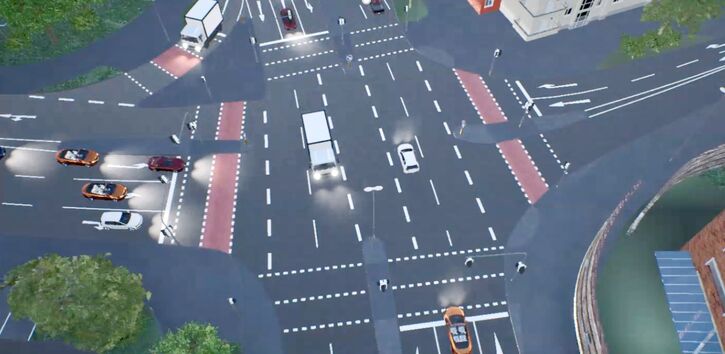Functional and Traffic Safety for Automated and Connected (=Vernetzte) Mobility – Benefits (=Nutzen) for Society and Ecological (=oekologische) Impact (=Wirkung).
SAVeNoW deals with the creation of a digital twin of Ingolstadt for safe and sustainable mobility. It aims to research, develop, and test complementary and synchronized virtual and digital test fields that are as close as possible to physical reality or complement it decisively with sensor technology. SAVeNoW follows up on the results of the previous project SAVe.
Our Vision
is a functional, socially transparent, and accepted “overall tool”, with which the relevant questions of the domains traffic efficiency, traffic safety, and ecology/sustainability are analyzed and answered with solution scenarios and associated measures. The promising simulated measures can be applied in reality.
It aims to research, develop, and test complementary and synchronized virtual and digital test fields that are as close as possible to physical reality or complement it decisively with sensor technology. SAVeNoW follows up on the results of the previous project SAVe.
Five Work Packages:
subdivide the project into the following aspects::
- Social Participation and Accompanying Issues (GTBF)
- Virtual Test Field (VTF)
- Digital Test Field (DTF)
- Model Structuring and Architecture (MSA)
- Simulation and Impact Analysis of Measures (SWM)
Project Issue
Our overall goal is to create the prerequisites for a standardized, holistic, and sustainably operable simulation model for various use cases and target groups that can be permanently enriched and updated with a wide variety of real-time data. Furthermore, we research reliable methods for optimizing traffic safety, emission reduction, traffic efficiency, and driving comfort on different spatial and temporal scales. After all, this is the only way to enable scientifically sound predictions that can achieve a social consensus and allow for a forward-looking evaluation of measures such as the introduction of highly automated driving in inner-city road traffic.
Focus of HCIG
Within SAVeNoW, HCIG mainly focuses on the work package “Social Participation and Accompanying Issues” (GTBF). Together with our interdisciplinary partners, we conduct qualitative and quantitative studies, particularly with the help of actively obtaining the citizen’s perspective.
In addition to social acceptance, we also investigate the users’ requirements concerning the vehicle interior, the mobility concept, and the user’s well-being. Here, HCIG focuses on underrepresented target groups, like women or people with disabilities. We use participatory research (citizen participation) to investigate, among other things, the needs of women concerning interaction in the interior, their design wishes for the interior design, or requirements for accessibility.
The initial goal is to identify the wishes and requirements of citizens for autonomous traffic concepts by conducting surveys and user studies. Based on the results obtained in this way, new types of vehicle interior concepts are designed to focus on the user. The developed designs will then be made visible and tangible through virtual reality and vehicle mock-ups.
Another open problem in road safety is the communication between automated vehicles and unprotected road users (pedestrians, cyclists, or eScooter drivers) – with a lack of eye contact as automation increases. Using the digital twin in combination with VR environments, various interaction concepts are initially tested, and selected prototypes are implemented and evaluated in a user study.
